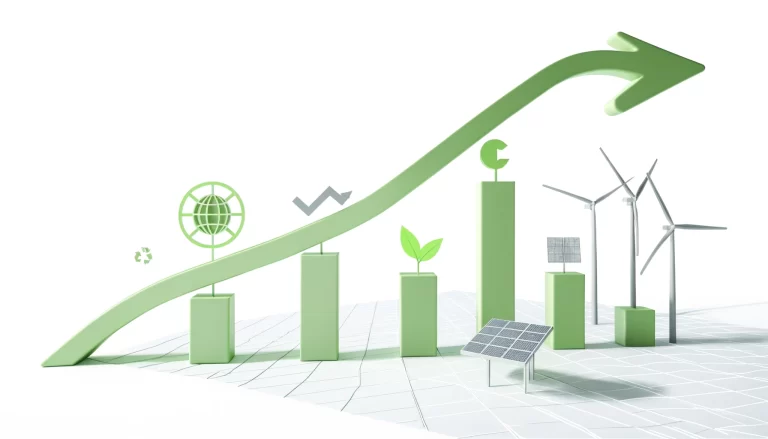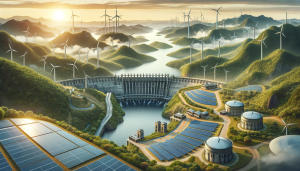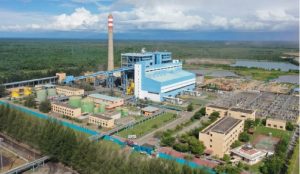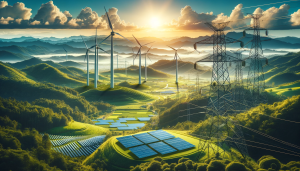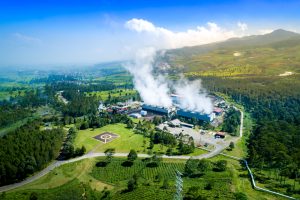by: Eko Prasetyo
Talk of greenflation or green inflation is growing, especially after the term was highlighted in the vice presidential debate by candidate number 2, Gibran Rakabuming Raka, on Sunday, January 21, 2024.
Greenflation refers to the rising prices of environmentally friendly goods due to high demand but insufficient supply. Energy transition may cause this impact, especially in adopting low-carbon production methods.
For example, nickel is a mineral resource used as a raw material for making electric car batteries. If technology increasingly requires nickel due to the massive production of electric cars, then the price of nickel will undoubtedly increase.
This example is one of the simple things that can be predicted. However, please note that greenflation is not solely caused by the transition to green energy or the massive production of electric cars.
Still, many factors exist, such as geopolitics, global economic growth, production activity, exchange rates, product quality and alternative products.
However, greenflation, for now, cannot be seen in black and white as a percentage like the calculation of the inflation rate formula, which can be calculated by dividing the difference between the current month’s consumer price index (CPI) and the previous month’s CPI, by the previous month’s CPI and multiplying by 100%.
The calculation results are estimates because the factors that cause greenflation are extensive. These estimates are caused by using the econometrics approach, which combines economic theory, mathematics, and statistics into one analysis system.
Impact
When it comes to the energy transition from fossil fuels to renewable energy, it is essential to underline that this transition is certainly not straightforward, as there is a long process involved, technologies involved, supply chains to assess, economic aspects to consider, and impacts both direct and indirect.
The green transition will mainly include changes in production methods, necessarily linked to the responsibility for high greenhouse gas (GHG) emissions. “Green” production, as capital, must be replaced with structures, equipment, materials, and techniques that produce lower GHG emissions. These significant changes are likely inflationary, although the opposite impact cannot be ruled out.
While bringing long-term benefits, these transitions require substantial investments and can create upward pressure on prices. The energy transition can also have a macroeconomic impact on inflation, especially in the short term.
Industrial decarbonization involves changing production methods to reduce greenhouse gas emissions. However, this could result in inflation as it requires large investments and faces constraints of limited mineral supply. Especially minerals such as lithium, for which demand is expected to increase significantly, but available reserves are questionable.
Dependence on limited supplies from a few countries can increase inflation risks, as seen in Russia’s gas exposure in Europe. Supply limitations and environmental constraints make mineral supply inelastic, creating an inflationary configuration in international markets.
Yellow vest action and how Indonesia is doing
Greenflation happened in France in 2023. At that time, greenflation conditions triggered a demonstration known as the ‘yellow vest’ movement. The demonstrations, which lasted up to three weeks, were triggered by a tax system that was considered burdensome and not commensurate with improving the quality of life of the people.
This movement was triggered by French President Emmanuel Macron’s policy to finance clean energy development by raising fuel prices. This demonstration turned into a riot after the masses burned vehicles and looted.
As a result, Macron provided wage increases for the poorest workers and tax cuts for pensioners as well as postponing fuel increases.
Although the energy transition brings inflationary impacts, it is important to look at long-term solutions and benefits. Electric vehicles, renewable technologies and climate policies can be solutions to green inflation. While some solutions may be inflationary in the near term, they may be disinflationary in the future when commodity prices fall.
Solution
Concerns have been raised that the energy transition will drive inflation as companies invest less in fossil fuel energy while the cost of renewable energy is still high.
Factors such as global regulations and policies that affect inflation seem indispensable, with climate policies in place for decades as a structural driver.
From a business perspective, asset managers need to communicate that the energy transition is a long-term decision. Businesses that use commodities and fossil fuels can do well because production costs rise more slowly than prices, positively impacting earnings and valuations.
Conversely, renewable energy sector valuations can be expensive as most of these businesses are still at a developmental stage. It should be noted that investors may experience variations in the process, and strategies that seek to manage inflation and volatility can be important from a portfolio perspective in the short term.
In other words, tackling greenflation requires cooperation between governments, producers and consumers. The government can consider policies that incentivize the development of green technologies and ensure an adequate supply of renewable energy.
Manufacturers can innovate to reduce the cost of producing green products, while consumers can consider reducing energy consumption and choosing more environmentally friendly products.
With good cooperation, greenflation can be overcome while still promoting sustainable economic growth and protecting the environment. As such, greenflation can be an opportunity to drive positive changes in industry and society towards sustainability.

